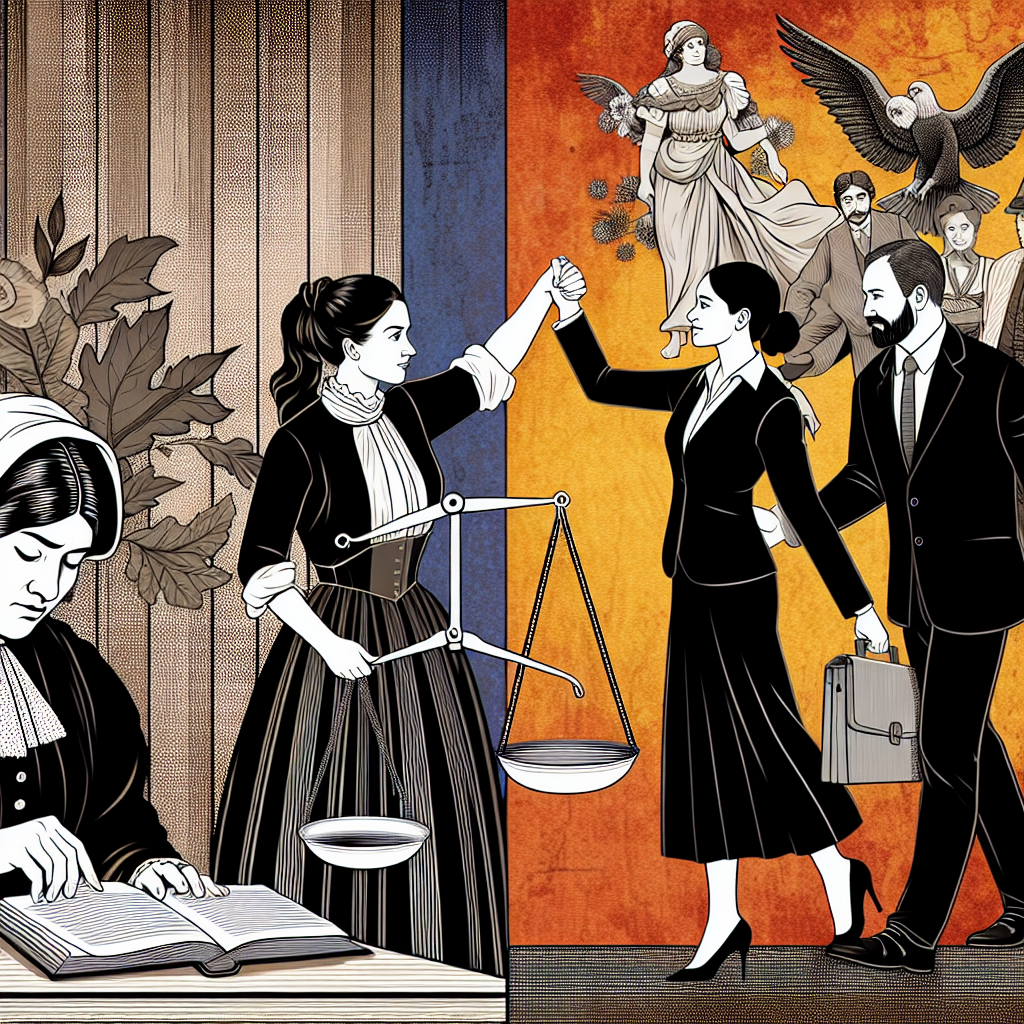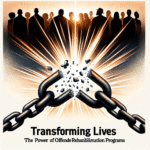
Introduction
In an age where gender equality is more prominent than ever, the shadows of a longstanding legacy of bias still loom large, influencing not only societal perceptions but also economic opportunities and personal identities. The "Legacy of Bias: Gender Discrimination in Historical and Modern Contexts" is a multifaceted issue that weaves through the fabric of our history and continues to shape contemporary society. This article explores the roots of gender discrimination, its evolution, and the compelling need for change, all while offering unique insights and case studies to enrich the discussion.
Understanding Gender Discrimination: A Historical Overview
The Roots of Gender Bias
Historically, gender discrimination has been deeply embedded in many cultures around the world. Societal norms often dictated that men held predominant roles in governance and economy, while women’s roles were predominantly domestic. This divide laid the groundwork for systemic biases that persist to this day.
Table 1: Historical Gender Norms vs. Modern Perspectives
| Aspect | Historical Norms | Modern Perspectives |
|---|---|---|
| Employment | Male-dominated fields | Equal opportunity focus |
| Education | Limited to domestic skills | Equal access to education |
| Political power | Male-only voting | Women’s suffrage movements |
Milestones of Change
Several key movements have disrupted these entrenched biases, propelling society towards greater equality:
- The Suffragette Movement (Late 19th to Early 20th Century): Women campaigned vigorously for the right to vote, spearheading a paradigm shift in political representation.
- The Feminist Movements of the 1960s and 1970s: These movements expanded discussions around women’s rights, addressing issues such as work conditions, reproductive rights, and equal pay.
Case Study: The Suffragette Movement
The suffragette movement serves as a pivotal example of the fight against the legacy of bias. Women across the globe took significant risks to demand their rights, resulting in changes that laid the groundwork for future generations. Their courage and commitment not only allowed women to vote but also ignited a widespread conversation about gender equality.
Relevance Analysis: The suffragette movement illustrates how societal norms can be challenged, resulting in monumental shifts towards equality—an essential reference point for any discussion on the legacy of bias.
The Modern Landscape: Gender Discrimination Today
Current Statistics on Gender Discrimination
Despite the progress made, gender discrimination remains pervasive in work environments, politics, and healthcare.
Table 2: Gender Wage Gap in Various Countries (2021 Data)
| Country | Gender Wage Gap (%) |
|---|---|
| United States | 15% |
| Germany | 19% |
| South Korea | 31% |
| Japan | 26% |
Workplace Disparities
Findings indicate that women are still underrepresented in leadership roles across many sectors. According to reports, only 8% of Fortune 500 CEOs are women, demonstrating that biases, both implicit and explicit, continue to influence hiring and promotion practices.
Case Study: The Gender Wage Gap
Recent research highlights significant pay disparities between men and women across various professions. For instance, women in tech often earn 20% less than their male counterparts. This case study underscores how systemic issues and biases continue to impact the economic landscape.
Relevance Analysis: The gender wage gap exemplifies the ongoing challenges posed by the legacy of bias in the modern context, making it essential for addressing these inequalities.
The Role of Policy and Legislation
Current Legislative Frameworks
Nations have enacted various policies aimed at reducing gender discrimination, yet gaps remain.
- The Equal Pay Act (1963) in the U.S. was designed to address wage disparities, yet women still face discrimination.
- The Gender Equality Act (2012) in Australia aimed to address systemic inequalities but encounters enforcement challenges.
Case Study: Equal Pay Legislation
An examination of countries with effective equal pay legislation can reveal the successes and challenges faced in the application of these laws. For instance, while Iceland stands as a leader in gender pay equity, ongoing monitoring and transparency measures are key components of its success.
Relevance Analysis: Legislative frameworks serve as a crucial battleground in the fight against the legacy of bias. They reveal the complexities of translating promises of equality into tangible outcomes.
Societal Perceptions and Media Representation
The Power of Media in Shaping Norms
Media serves as a powerful tool in both perpetuating and combating gender biases. While some portrayals have made commendable strides towards equality, others reinforce outdated stereotypes.
- Television and Film: Representation matters; when women are portrayed in versatile roles, it challenges existing biases.
- Advertising: The portrayal of women in advertisements continues to be a significant issue. Brands that challenge stereotypes have seen increased consumer loyalty.
Case Study: Analyzing Media Representation
Consider the representation of women in the tech industry in media. Films like "Hidden Figures" spotlight the contributions of female scientists, while the stereotype of the male tech lead remains prevalent.
Relevance Analysis: Media representation contributes to societal perceptions of gender roles, demonstrating the ongoing relevance of the legacy of bias in modern contexts.
Intersectionality: Understanding Complexity
Beyond Gender: Other Dimensions of Discrimination
The conversation surrounding gender discrimination intersects with various other social categories, including race, class, and sexual orientation. This broadens the discussion to consider how different identities face unique challenges.
Case Study: Women of Color in the Workforce
Women of color experience compounded levels of discrimination. A report from McKinsey & Company indicates that women of color are among the least represented groups in leadership roles.
Relevance Analysis: Understanding intersectionality is crucial in addressing the legacy of bias: it underscores that gender discrimination cannot be viewed in isolation.
Moving Forward: Breaking the Legacy of Bias
Actionable Insights for Change
Promote Gender Equity Programs: Organizations can implement frameworks that advocate for pay equity and equal opportunities.
Encourage Advocacy and Awareness: Support individuals and groups working to amplify marginalized voices in the gender equality conversation.
Engage with Legislation: Advocating for stronger policies can help dismantle institutional biases.
Educational Initiatives: Schools can teach about gender bias and equality at a younger age, fostering healthier attitudes for future generations.
- Media Responsibility: Encourage media outlets to showcase diverse representations of gender to challenge stereotypes.
Conclusion
The "Legacy of Bias: Gender Discrimination in Historical and Modern Contexts" serves as both a reminder and a challenge. While remarkable progress has been made, the enduring impact of gender bias continues to shape experiences and opportunities in various sectors. By understanding the roots and modern manifestations of gender discrimination, we can all contribute to building a society where equality and fairness are not just ideals but realities.
FAQs
1. What is gender discrimination?
Gender discrimination refers to unfair treatment of individuals based on their gender, often resulting in unequal opportunities in areas like employment, education, and healthcare.
2. How does historical context influence modern gender discrimination?
Historical practices and societal norms often create a legacy that perpetuates biases, making it difficult to achieve complete gender equality today.
3. What are some signs of gender discrimination in the workplace?
Common signs include pay disparities, lack of representation in leadership roles, and differing expectations based on gender.
4. How can organizations effectively combat gender discrimination?
Organizations can promote inclusive policies, conduct regular pay audits, and provide training on unconscious bias.
5. What role does media play in gender discrimination?
Media can either challenge or reinforce stereotypes; its portrayal of males and females in various roles significantly impacts societal perceptions of gender.
By engaging with these themes and understanding the legacy of bias, we can break down barriers and create a more equitable future for all.













